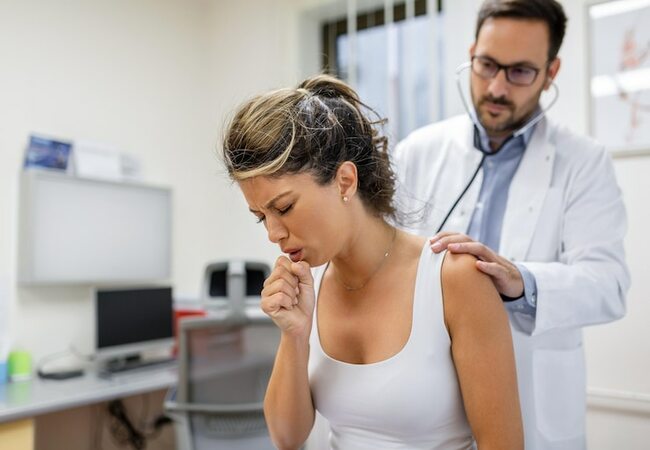How to Control COPD Symptoms with Exercise?

Exercise is known to cure every possible issue in the human body. However, in some cases, exercise can become painful especially if you have physical issues. This is epically common in asthma, arthritis, and COPD. When most people are diagnosed with COPD, they are asked to stay physically active to improve the capacity of their lungs. Although this can be hectic because you will struggle while breathing, if you work on the capacity of your lungs you will see improvement right away. Before you know how to actually address the issue of COPD, you need to know how to get diagnosed and what COPD actually is.
With the help of this article, we will start off by helping you know in detail about COPD, its symptoms, and why exercise is important. Then we will look at some of the best exercises that can help you improve your COPD symptoms.
What Is COPD?
COPD is known as chronic obstructive pulmonary disease and it is a lung disease. This disease affects the capacity of the lungs and causes breathing issues. However, it develops over the years so most people do not realize it unless the symptoms become worse. During the initial stage, you will not have any noticeable symptoms. This is especially common when you are young or you have a good overall weight. However, once you start to age or when you hit your 40s and start to lose weight, the symptoms will become noticeable.
What Are The Symptoms Of COPD?
COPD symptoms are very general, which is the reason most people mix it with allergies and common lung capacity issues. This is a very common reason people do not report this issue unless it gets worse and the symptoms become very evident.
To make sure you pay special attention to the symptoms before they get worse, you need to know about some of the most important symptoms first. Here are common symptoms that will help you get early diagnosis.
- Persistent cough
- Extreme fatigue after simple activities
- Chronic wheezing
- Feeling shortness of breath even after simple activities like walking or taking stairs
- Respiratory allergies and infections
- Lack of oxygen and change in the color of nails and skin especially purpose lips
- Mucus secretion or excess phlegm
- Weight loss without reason
- Feeling tired
- Fluid buildup in various tissues especially ankles
- Chest congestion
- Bloody coughing
- Persistent chest infection and irritation
How Do You Get Your COPD Diagnosed?
Since the symptoms are somewhat similar to the common lungs and pollen allergies you will notice that your health-based history plays a very important role in your diagnosis. To differentiate between the common lung issues and your COPD symptoms, where are some of the main things your doctor will ask:
- Smoking history
- Family history of COPD
- Symptoms time period
- The severity of the symptoms
- Exposure to smoke, pollution, and chemicals
- Working conditions with exposure to chemical fumes and dust
How Can Exercise Help With COPD?
Most people think that since they feel the strain every time they try to work out, this means they should avoid exercise or any extreme activity altogether. However, pulmonologists believe that lungs can be tamed and their capacity can be increased if you constantly work on them. This is the reason while others struggle with breathing, athletes usually run better without even feeling the strain on their lungs. With the right workout and good capacity-building exercises, you will be able to manage the symptoms of COPD. However, if you think exercising will completely eradicate the symptoms you might not be right. With the help of exercise, you can treat the symptoms but cannot cure them completely so make sure you know how you are going to change things in your day-to-day life for treatment of the symptoms.
Best Exercises That Can Help You Manage Your COPD Symptoms
Curing chronic obstructive pulmonary disease through exercise means that you cannot just stick to the physical activity of exercise only. You also need to keep in mind that there are respiratory exercises that will especially help you with the capacity building and healing of the cells of your lungs. Where most people believe that the cells of the lungs cannot be healed once they are damaged, this can be true to some extent but you can restrict the damage and revive your lungs by working out. This will help you control the symptoms and also help you to avoid any further damage. Here are some of the best workouts that will help you heal and mage the symptoms:
Yoga
Yoga is the perfect combination of physical workout and breathing exercises. While you work, you will be focusing on managing your symptoms in the best possible way. For every functional workout in yoga, you will also be managing your breathing. Most of the poses require you to hold your breath and then exhale which is a very good way to manage and heal your lungs.
Deep Breathing
Deep breathing exercises are very common, so pulmonologists especially recommend them for people with lung capacity issues. You will have to stay somewhere where you can get a breath of fresh air and then focus on your breathing. Deep breathing doesn’t just involve the process of sucking in the air but also the way you let go of it after holding it for a long time.
Cardio
Cardio is a perfect combination of physical activity and exertion of energy that will help you actually challenge your own body. People with lung-related issues and low lung capacity are recommended to use cardio for healing. With the help of cardio, you will learn to improve the oxygen concentration in your blood which will eventually help with the heart’s health as well.
Running
Running is a very easy yet the most effective workout for the lungs. With the help of running, you can adjust the impact of the workout on your body. People who feel tired easily and want to go slow can simply reduce speed. In COPD when you feel constantly tired, walking can help you adjust the oxygen level in your body by helping you breathe better.
Swimming
Perfect for people with lung issues or low lung capacity, swimming is a very good way to practice the way you breathe. It will also help you hold your breath for longer and your lungs will be able to perform better.
Muscle Relaxation and Mediation
A common misconception about muscle relaxation therapy is that it will only be helping you relax your body and not the mind but with guided meditation, you will notice that you are able to heal better. This is especially important because most people switch to mouth breathing which eventually impacts the quality of the air they inhale because of no filtration and meditation helps you improve that.
Bottom Line
To sum it all up, it is safe to say that although exercise helps in managing symptoms you cannot let go of the general treatment because exercise is not the cure. You have to continue your medication along with everything that your doctor recommends. However, if the doctor asks you to go easy on the exercise you must seek professional help because in some cases, the lung capacity becomes so restricted that it almost becomes very difficult to breathe. So rather than taking decisions on your own try to seek professional guidance. Also, you need to make sure you are focusing on your diet in the best way possible because a good diet will help heal better and it will also help you to stay energized when you work out.



